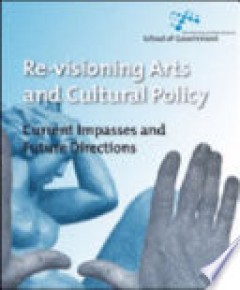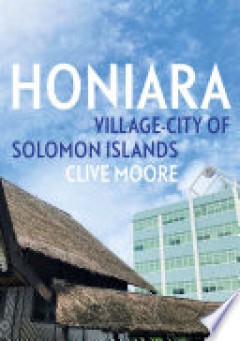Filter by

The Contest for Aboriginal Souls : European missionary agendas in Australia
This book covers the missionary activity in Australia conducted by non-English speaking missionaries from Catholic and Protestant mission societies from its beginnings to the end of the mission era. It looks through the eyes of the missionaries and their helpers, as well as incorporating Indigenous perspectives and offering a balanced assessment of missionary endeavour in Australia, attuned to …
- Edition
- 15
- ISBN/ISSN
- 9781760462055
- Collation
- 280
- Series Title
- -
- Call Number
- 266.00899915.GAN

Securing Village Life : Development in Late Colonial Papua New Guinea
Securing Village Life: Development in Late Colonial Papua New Guinea examines the significance for post-World War II Australian colonial policy of the modern idea of development. Australian officials emphasised the importance of bringing development for both the colony of Papua and the United Nations Trust Territory of New Guinea. The principal form that development took involved securing small…
- Edition
- 13
- ISBN/ISSN
- 9781922144850
- Collation
- 318
- Series Title
- -
- Call Number
- 338.9009953.MAC

Australia’s Fertility Transition : A study of 19th-century Tasmania
In the late 19th and early 20th centuries, most countries in Europe and English-speaking countries outside Europe experienced a fertility transition, where fertility fell from high levels to relatively low levels. England and the other English-speaking countries experienced this from the 1870s, while fertility in Australia began to fall in the 1880s. This book investigates the fertility tran…
- Edition
- 13
- ISBN/ISSN
- 9781760463373
- Collation
- 318
- Series Title
- -
- Call Number
- 304.6309946.MOY

Japan at War and Peace : Shidehara Kijūrō and the Making of Modern Diplomacy
The question of how to maintain the continuity of diplomacy while developing democracy without military intervention is an old and new issue. The challenge can be described as a dilemma between democracy and diplomatic coherence. This dilemma is not unique to the twenty-first century; it has been a constant challenge to the development of democracy. In non-Western countries, democratisation ori…
- Edition
- 11
- ISBN/ISSN
- 9781760464974
- Collation
- -
- Series Title
- -
- Call Number
- 952.044092.HAT

The power of economic ideas: the origins of Keynesian macroeconomic managemen…
Economics, Keynes once wrote, can be a ‘very dangerous science’. Sometimes, though, it can be moulded to further the common good though it might need a leap in mental outlook, a whole new zeitgeist to be able do do. This book is about a transformation in Australian economists’ thought and ideas during the interwar period. It focuses upon the interplay between economic ideas, players and p…
- Edition
- -
- ISBN/ISSN
- 9781921666278
- Collation
- 326 p
- Series Title
- -
- Call Number
- 994.042 MIL t

No truck with the chilean junta!
When lorry drivers in Northampton slapped stickers on their cabs declaring ‘No truck with the Chilean Junta!’ they were doing more than threatening to boycott. They were asserting their own identity as proud unionists and proud internationalists. But what did trade unionists really know of what was happening in Chile? And how could someone else’s oppression become a means to solidify your…
- Edition
- -
- ISBN/ISSN
- 9781925021547
- Collation
- xiii + 304 p
- Series Title
- -
- Call Number
- 322.2 JON n

Pedigree and Panache: A History of the Art Auction in Australia
Art auctions have long captured the public imagination. They regularly make news headlines and have become synonymous with glamour, money and social distinction. The marketing of auction houses and the works they sell has resulted in firms attaining authoritative positions and the ability both to influence and reflect collecting tastes. Pedigree and Panache is the first comprehensive history of…
- Edition
- -
- ISBN/ISSN
- 9781921313721
- Collation
- 254 p
- Series Title
- -
- Call Number
- 702.994 HUD p

Re-Visioning Arts and Cultural Policy : Current Impasses and Future Directions
In this monograph, Jennifer Craik undertakes a critical and historical analysis of the main imperatives of arts and cultural policy in Australia. With forensic skill she examines the financial and policy instruments commonly relied upon in this much contested and diverse area of public policy. Craik uses her analysis of past and current policy responses as a platform for articulating future opt…
- Edition
- -
- ISBN/ISSN
- 9781921313394
- Collation
- -
- Series Title
- -
- Call Number
- 306.47.JEN

Hesychasm and Art : The Appearance of New Iconographic Trends in Byzantine an…
“Although many of the iconographic traditions in Byzantine art formed in the early centuries of Christianity, they were not petrified within a time warp. Subtle changes and refinements in Byzantine theology did find reflection in changes to the iconographic and stylistic conventions of Byzantine art. This is a brilliant and innovative book in which Dr Anita Strezova argues that a religious…
- Edition
- -
- ISBN/ISSN
- 9781925021851
- Collation
- -
- Series Title
- -
- Call Number
- 759.022.STR

Honiara : Village-City of Solomon Islands
Nahona`ara—means ‘facing the `ara’, the place where the southeast winds meet the land just west of Point Cruz. Nahona`ara became Honiara, the capital city of Solomon Islands with a population of 160,000, the only significant urban centre in a nation of 721,000 people. Honiara: Village-City of Solomon Islands views Honiara in several ways: first as Tandai traditional land; then as cocon…
- Edition
- -
- ISBN/ISSN
- 9781760465070
- Collation
- -
- Series Title
- -
- Call Number
- 995.93.MOO
 Computer Science, Information & General Works
Computer Science, Information & General Works  Philosophy & Psychology
Philosophy & Psychology  Religion
Religion  Social Sciences
Social Sciences  Language
Language  Pure Science
Pure Science  Applied Sciences
Applied Sciences  Art & Recreation
Art & Recreation  Literature
Literature  History & Geography
History & Geography